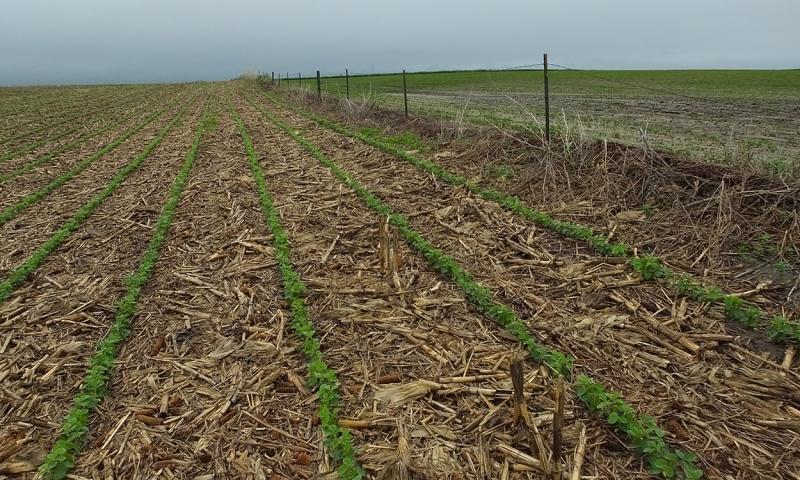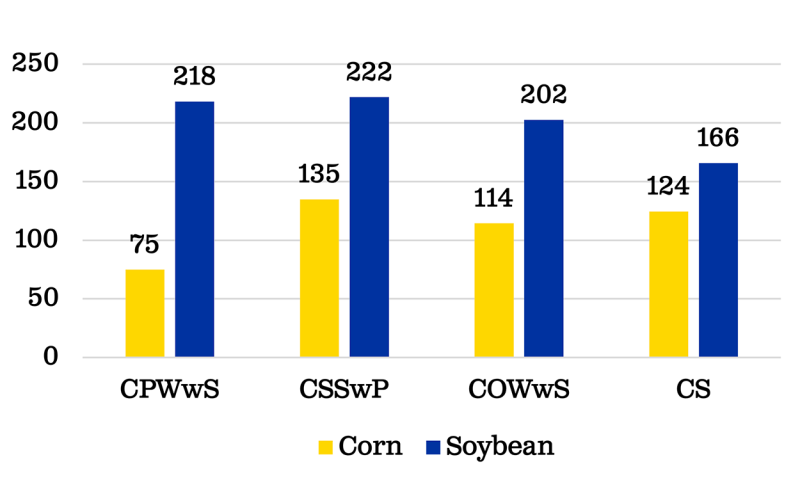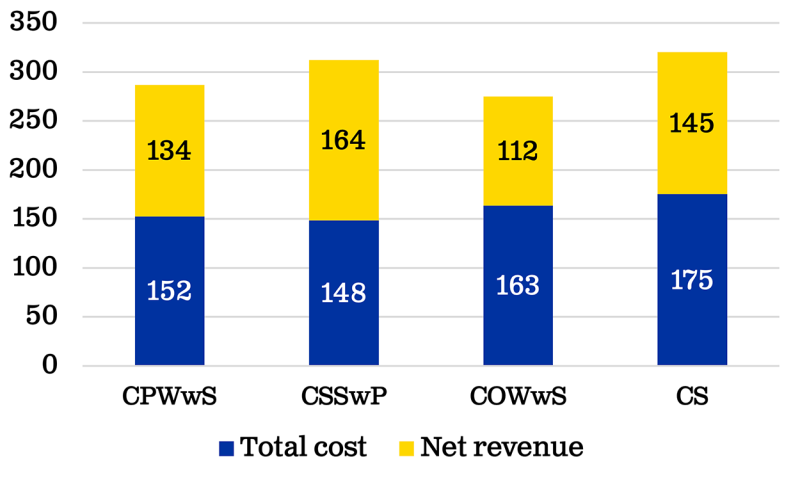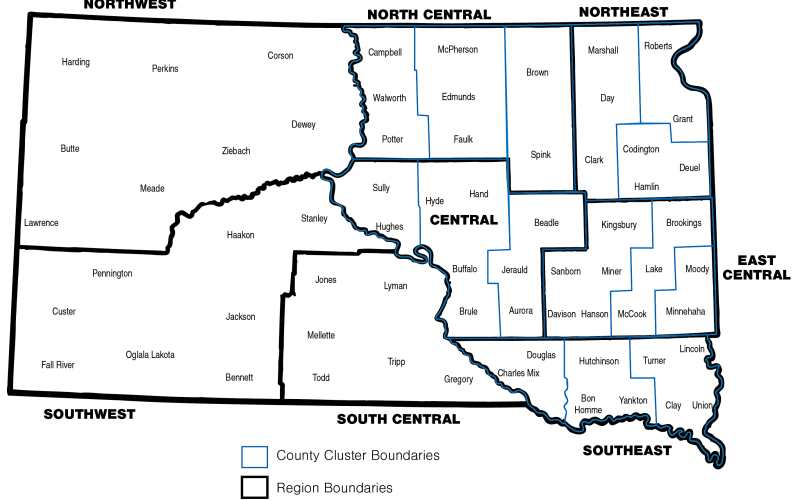
Economic returns are an important factor to consider when selecting crop rotation systems. Relatively low profitability of third and fourth crops can pose a barrier to farmers’ adoption decisions (Wang et al., 2021). However, little information regarding the economic performance of different crop rotations is available in a transitional climate zone of eastern South Dakota.
In a recent study, Feng et al. (2021) compared three four-year crop rotations with the two-year corn-soybean (CS) rotation. The four-year crop rotations were: 1) corn-pea-winter wheat-soybean (CPWwS), 2) corn-soybean-spring wheat-pea (CSSwP) and 3) corn-oat-winter wheat-soybean (COWwS). This is part of a long-term, no-till crop rotation experiment established in 2000 at the Eastern South Dakota Soil and Water Research Farm near Brookings, South Dakota. In the beginning of the four-year study cycle (2013-2016), Nitrogen (N) fertilizer was applied to all plots at following rates: 90 lbs./acre for corn, 103 lbs./acre for oat and 116 lbs./acre for winter/spring wheat. Thereafter, the N fertilizer application rate was determined based on fall soil testing results aiming for an 85% of crop yield goal. No fertilizer was applied in the pea and soybean phases of each rotation.
Net Revenues

Net revenues of corn and soybeans in different crop rotations.
The synergy among the crops made a difference in corn yields for four different rotations. For instance, corn following pea had a greater yield than corn following soybean. Among all rotations, the CSSwP rotation had the highest corn yield.
As shown in Figure 1, net revenues for both corn and soybean in the CSSwP rotation ranked the highest among all rotations. While the two-year rotation has the second highest revenue for corn, it has the lowest revenue for soybeans. This is due to the lower soybean yield in the two-year CS rotation than those in the four-year crop rotations.
Economic Performance

Overall economic performance of different crop rotations.
Figure 2 displays the total cost and net revenue for the three four-year rotations in comparison with the one two-year rotation, as averaged across the study period. The total production costs, including machinery operation, fertilizer, herbicide and seed, for the two-year CS rotation ranked the highest among all crop rotations. Specifically, the total cost for the CS rotation was 7%, 15%, and 18% greater than the COWwS, CPWwS and CSSwP respectively. Among the four-year rotations, the CSSwP rotation has the highest net revenue among all rotations, which surpasses the CS rotation in terms of reduced cost and increased net revenue. Other than CSSwP, the other crop rotation systems in our study are not as competitive as CS when it comes to net revenue comparison.
Summary
A comparison of the three four-year crop rotations with the two-year CS rotation indicates that the right selection of crop rotation system plays an important role in optimize economic returns. The two-year CS rotation may achieve the highest economic returns with sufficient fertilizer input, yet this simplified rotation lacks resilience when N fertilizer is applied below the level for yield maximization goal, as demonstrated by declining economic returns over the study period.
In comparison, the CSSwP rotation is resilient to a reduced-N fertilizer application rate, with the lowest total cost and highest net revenue among all rotations. Our study suggests that extending the CS rotation to a crop rotation with more variety, such as CSSwP, offers the potential to improve economic returns and reduce the overreliance on N fertilizer.
References
- Feng H., T. Wang, S. L. Osborne, and S. Kumar. 2021. Yield and Economic Performance of Crop Rotation Systems in South Dakota. AgroSystems, Geosciences and Environment, 4:e20196.
- Wang T., H. Jin, Y. Fan, O. Obembe, and D. Li. 2021. Farmers' adoption and perceived benefits of diversified crop rotations in the margins of Corn Belt. Journal of Environmental Management, 293: 112903.


